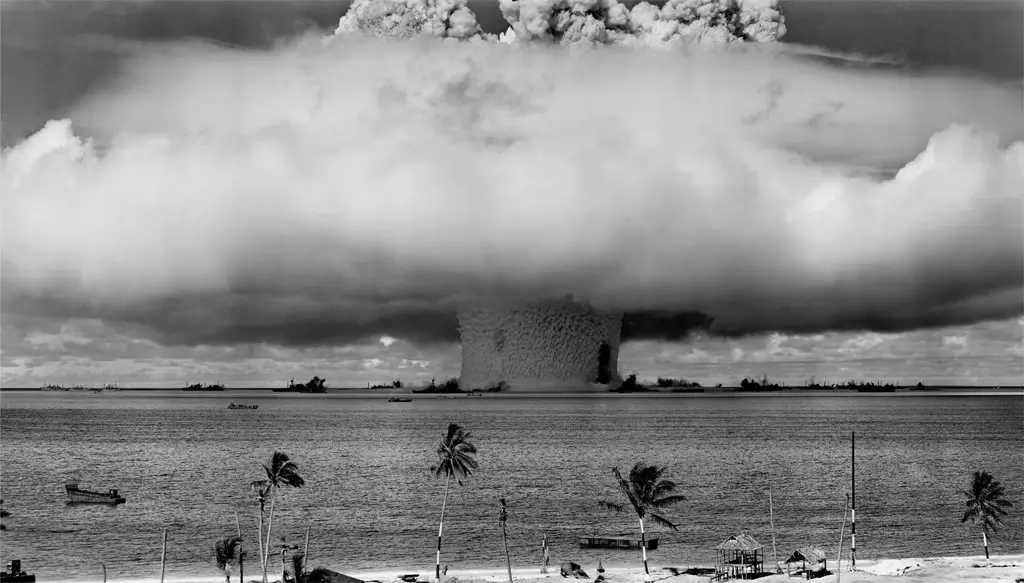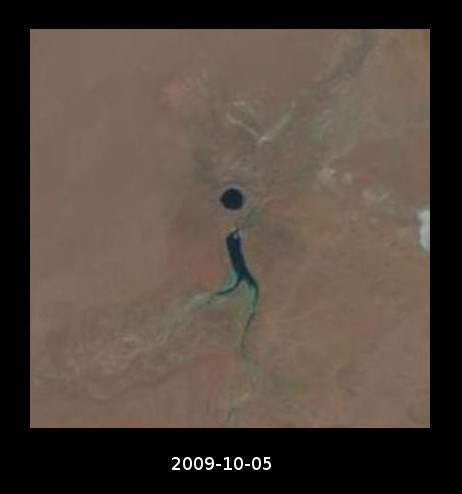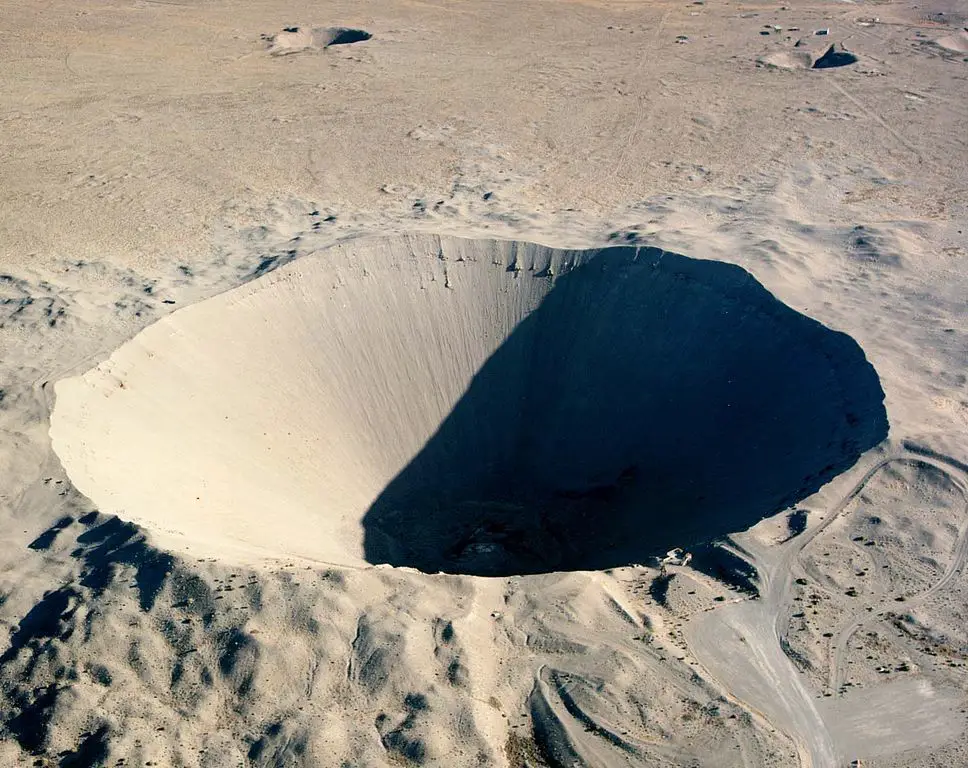The United States and the Soviet Union each had programs that took place from the early 1960s to the late 1980s that conducted non-military nuclear detonations that were known as peaceful nuclear explosions or PNEs.
The purpose of the PNEs was to study the use of thermonuclear detonations for commercial applications such as propulsion, civil engineering projects, extinguishing fires, oil recovery, mining, and even applications in space. Both countries signed the Peaceful Nuclear Explosions Treaty in 1976 after much negotiation.
The treaty stipulated that both countries would not carry out an explosion that was in excess of 150 kilotons, that a group of individual explosions together wouldn’t be more than 1,500 kilotons, and that both countries would continue to comply with the Limited Test Ban Treaty of 1963. In addition, the countries would have their own observers in the other country during a nuclear test to verify the explosions met the terms of the treaty, which was no small fault during the contentiousness of the Cold War.
The USSR’s PNE Program
The USSR conducted 124 PNEs from 1965 to 1989. Their program was called Peaceful Nuclear Explosions for the National Economy and was also known as Project 7. The first PNE was conducted by the USSR in 1965 and was also the largest PNE by either country.
The site was at the Chagan nuclear test site in Kazakhstan and was 140 kilotons. By comparison, the atomic bomb dropped on Hiroshima was 15 kilotons. The Soviets wanted to know if it was possible to create an artificial reservoir using a PNE. They placed the nuclear device deep in the ground under a dry portion of the Chagan River, and the blast made a crater 100 meters deep (328 feet) and 400 meters across (1,312 feet).
The lip height of the newly formed crated was between 20 and 38 meters (65 to 124 feet). Some nuclear material was detected over Japan, and since the test happened before the Peaceful Nuclear Explosions Treaty, the United States questioned whether the USSR had violated the Limited Test Ban Treaty of 1963.
The crater became a lake because of a channel that had been carved to the area before the test had taken place, but the radioactive levels of the water in the newly formed lake were found to be almost 100 times that of standard water levels more than 25 years later. That is why the reservoir has sometimes been dubbed, the “Atomic Lake.”
The Soviets had another ambitious project in 1965 that was to use PNEs to create a canal that would bring water from the Northern Arctic region to the Volga River and proposed a series of explosions in higher elevations to cut the area of the canal. They began the project in 1969, but it was soon found that regions in the south weren’t suitable for PNE excavation. The project was eventually abandoned in the mid-1980s.
The USSR did have some practical success with PNEs. In 1966, the Soviets used a nuclear detonation to extinguish a gas well fire that had been burning for three years after multiple other attempts had failed to put it out. A 30-kiloton charge was placed near the wellhead and detonated, which snuffed out the fire. The radioactivity was measured in the 1990s and found to be at standard levels. The Soviets conducted five fire extinguishing applications using PNEs, and only one was unsuccessful.
In total, the Soviets used PNEs 25 times for blasting out underground caverns, five times for constructing water reservoirs, 21 times to recover oil and gas, and the five aforementioned tests for extinguishing gas well fires.
The U.S. PNE Program
The United States established its peaceful nuclear explosions program in 1957. It was known as the Plowshare Program. The name came from a Bible verse from Micah 4:3 that read, “They shall beat their swords into plowshares, and their spears into pruning hooks,” and that nations would move away from war and not train for it again.
The U.S. program was much shorter than the Soviet program and ran from the 1960s to the 1970s before ending in 1975. A majority of the proposals under the plowshare program were to test whether PNEs could be used for large-scale excavation projects. Scientists were able to develop ways to shape charges that would minimize the release of radioactive material and achieve the desired engineering goal, but none of the proposals were commercially viable and would have been economically challenging.
One proposal in 1958 was called Operation Chariot, which would’ve used five thermonuclear explosions to build a harbor in Point Hope, Alaska. It was ultimately abandoned in 1962 because of local opposition and concerns about the possible economic and ecological impact of the plan. Other proposals looked at the possibility of using PNEs to extract oil from tar sands and oil shale.
A study in 1963 looked at the possibility of using 22 thermonuclear explosions to make a cut through the Bristol Mountains in California to be used for a highway and rail lines. The explosive force would’ve been 1,730 kilotons, but the plan was ultimately removed from the budget in 1965. After this time, most of the research was focused on canal excavation, specifically the widening of the Panama Canal.
The Plowshare Program did conduct a number of PNE tests, though they weren’t near as many as the Soviets had conducted. The program had 27 total tests, the first of which was Project Gnome in 1961 in New Mexico. This thermonuclear device was placed 360 meters (1,181 feet) underground and was detonated, creating an underground cavity 20 meters wide (65 feet) and 50 meters high (164 feet).
The second test took place in 1962 at Yucca Flat in Nevada, called the Sedan blast. It was designed to test the potential of making artificial reservoirs using a PNE. The underground explosion was 104 kilotons and displaced more than 10 million tons of earth. While this test was the largest conducted during the program, it was also the test that had the most radioactive fallout. Radioactive concentrations were detected as far away as Iowa and North Dakota.
In the years that followed, PNE tests were used to study if it was possible to aid in gas production. Some of these tests demonstrated that PNEs could possibly be commercially viable for gas production, but the gas was too radioactive to be sold. The Plowshare Project also looked at if it was possible to make heavy elements that weren’t even on the Periodic Table, but the goal was never reached.
Other PNE tests weren’t under the umbrella of the Plowshare Program. One looked at the possibility of using PNEs for space travel, specifically using a nuclear explosion to propel a spacecraft, called Project Orion.
The idea was to use a thermonuclear device mounted behind a spacecraft so that when it was detonated, it would transfer momentum to a pressure plate and shock absorber and move the craft. The concept was called Nuclear Pulse Propulsion and not as farfetched as it appeared. But it never got off the ground, however, because when the Partial Test Ban Treaty was signed in 1963, it banned the testing of nuclear devices in space.
Sources: Lawrence Livermore National Laboratory, US Department of Energy, World-Nuclear.org, OSTI (1), OSTI (2)




